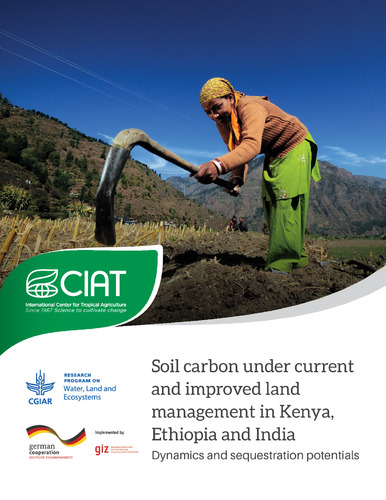Soil carbon under current and improved land management in Kenya, Ethiopia and India: Dynamics and sequestration potentials
Agriculture is a major contributor to climate change,
emitting the three major greenhouse gases (GHGs) –
carbon dioxide (CO2), methane and nitrous oxide – into the
atmosphere. According to the Fifth Assessment Report of
the Intergovernmental Panel on Climate Change (IPCC),
the Agriculture, Forestry and Other Land Use sector “is
responsible for just under a quarter (~10–12 Gt CO2eq/yr) of
[all] anthropogenic GHG emissions mainly from deforestation
and agricultural emissions from livestock, soil and nutrient
management”. Land use change – often associated with
deforestation – contributes about 11.2% to this share,
while agricultural production is responsible for 11.8%
(IPCC, 2014).
To reduce emissions from agriculture, while providing
and maintaining global food security, there is a growing
interest to develop and promote low-emission greengrowth
pathways for future agricultural production
systems. Sub-Saharan Africa (SSA) faces two concerns
in that respect: a) agriculture is the major emitter
of GHGs on this sub-continent, and b) agriculture is
largely underperforming. To feed a growing population,
productivity and total production need to increase
significantly. To achieve this while reducing emissions
from agriculture at the same time is a major challenge.
Climate-smart agriculture (CSA) sets out to address this
challenge by transforming agricultural systems affected
by the vagaries of climate change. CSA aims at improving
food security and system’s resilience while addressing
climate change mitigation.

